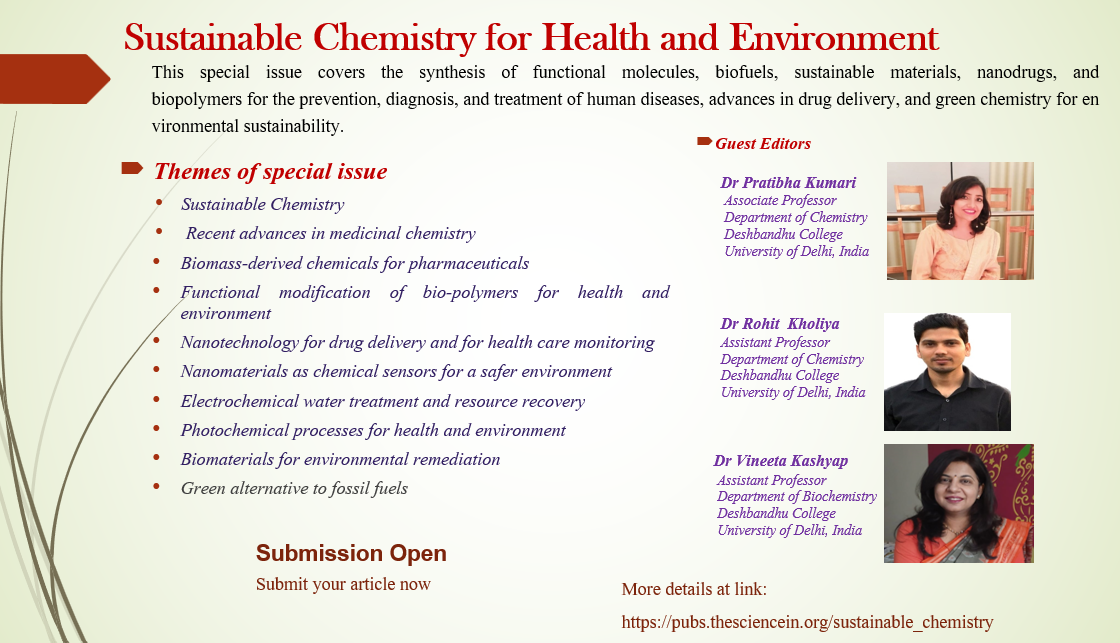The proper formatting and inclusion of essential details in the manuscript are necessary to make the work / article suitable for international readers. Any article submitted to The ScienceIn journals should be updated for the following points (It is must for accepted articles):
1. Title, Author Name, Affiliation, Abstract, Keywords
Title, Author Name, Affiliation, Abstract and Keywords are the most essential component towards unique identification and searching of your work. These should be construct properly, see the details at page (link) for points that should be considered for proper construction of these elements. The abstract text should be limited to maximum 200 words. Use notable and relevant keywords for google search.
2. Graphical Abstract
All journals published by ScienceIn requires a good graphical abstract. Authors must provide a good graphical abstract as per details provided on http://pubs.iscience.in/graphical . It should be within the specified dimensions. Graphical abstract should of good quality, using sober colors, high resolution for clarity.
3. Language
The language should be checked (for grammatical errors and spelling mistakes) thoroughly and language construction should be improved to make the article suitable for international audience. The language of article should be thoroughly updated to keep the language up to standard of international scientific communication.
4. References
The references should be formatted as per journal format and should be cited using one of citation management program (Mendeley, Zotaro, Endnote etc.).
(a) You may use Mendeley, a free software from Elsevier, the details about use of this software for inserting references are provided on https://pubs.thesciencein.org/mendeley . The citation format style file details are provided in author guidelines section on journal site.
(b) Please remember, the journal will not keep the citations from substandard/predatory journals.
(c) Nearly 30-40 References should be cited in the research article and >100 for a review article (You may also search articles related to your work/article from The ScienceIn journals: search at https://pubs.thesciencein.org/journal ).
(d) Remove references with website address (as it has been observed that website links keep on changing and readers are not able to find the referenced URL links). The Conference proceedings related references should preferably be replaced with journal references.
(e) The citations should be distributed throughout the manuscript (distributed equally in result and discussion, introduction and other sections).
5. Chemical Structures
In case article contains Chemical Structures, then all the structures and schemes should be formatted as per ACS format (Chemdraw > ACS 96 format).
6. Figures/graphics
Suitable printable figure, graphs and graphics may be included (with minimum 300 dpi resolution). Authors need to seek copyright reproduction permission for any figure/graphics produced from any other source/journal. Where possible, the figures, tables, schemes, structures should be arranged to single column width (half of page width).
7. Graphs
The graphs should be inserted directly from MS-Excel program (or other program e.g Origin), and must not be in image format (do not insert graphs as images in word file).
8. Metadata
Submitting Author need to ensure that the metadata (details of all authors) is complete. Please login to manuscript panel, click on ‘Publication’ link and then ‘add contributor’ button to add the details of all authors (In case you are not able to update or missed updating these details during submission, then send the details of each author (First Name, Last Name, Email ID, ORCID to respective journal office).
9. Template
The manuscript should be prepared as per author guidelines (in template) provided on the journal site. New template provided on respective journal site should be used for preparation of your article. It is must to provide the final accepted manuscript in the journal article template.
10. Plagiarism
Authors need to ensure that the article is plagiarism free (and can work / update the text during the revision towards making the manuscript plagiarism free.). The text similarity should be checked with standard software available in your institute/university. It is authors’ responsibility to keep the manuscript plagiarism free.
Authors should add (during revision) more text and figures to improve their manuscript.
————–
The ethical guidelines provided on respective journal site should be adhered to. The APC or OAC, if applicable, have been mentioned on respective journal site.

